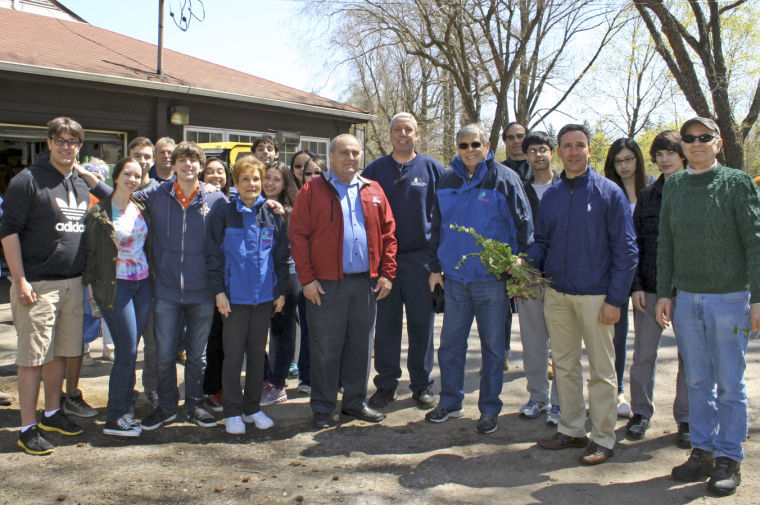A student from Great Neck North pulled a vine from the ground to expose a baby pine tree underneath.
“That tree”, she said, “wouldn’t have survived if it had to fight for nutrients and sunlight with the invasive plant that was just removed.”
On Sunday, April 21, nearly 50 volunteers joined together in Kings Point Park to help remove the rampantly-growing invasive species of garlic mustard.
Between 1 p.m. and 4 p.m., these Great Neck North and South High School volunteers showed up to clear areas of the park that had been invaded by this plant. Invasive plants crowd out the native plants that provide food and shelter for wildlife. They reduce the natural diversity and resiliency of the park’s ecosystem.
The ecofriendly community service, which took place a day before Earth Day, included Great Neck Park Superintendent Peter M. Renick, Deputy Superintendent Lisa Goldberg, park district commissioners Ruth Tamarin, Robert A. Lincoln, Jr. and Daniel M. Nachmanoff, Kings Point Park supervisor Bill McGirr and park district employee Paul Chalkis, state Sen. Jack M. Martins, resident Elizabeth Allen, Openspace Committee president Marty Markson along with other Openspace members and members of environmental clubs from both high schools, who were recruited to volunteer by Tamarin.
Martins had originally approached the board of commissioners about the invasive plant growth. He is extremely enthusiastic about continuing community service projects, such as this one, with the school district. Great Neck Park District Allen, aided in the supervision of the removal. Kings Point Park supervisor Bill McGirr shared information with the group about garlic mustard; where it originated, the damage it causes and how to eradicate it. He is quite knowledgeable about the ecological environment of the park and is extremely “happy that the new generation is participating in being stewards of our open spaces here in Great Neck.”
Altogether, the students cleared about four cubic yards.
Garlic mustard, a biennial herb native to Europe, was first recorded in the United States, on Long Island around 1868. It had been harvested for medicinal and culinary reasons for centuries.
By escaping into the New World, the plant found itself with lots of prime terrain to colonize and none of the predators – such as weevils – that it had to contend with back home.
As a result, it didn’t take long for garlic mustard, which thrives in shady, mild and moist environments, to travel its way up and down the Eastern Seaboard and then westward. Certain species of butterflies are adversely affected when garlic mustard displaces toothworts, their host plants.
Chemicals in garlic mustard are toxic to the larvae of the native butterflies. Other chemicals in the plant have been found to suppress native tree seedling growth. Success on eradicating this plant depends on removing garlic mustard while they are still small – before it’s too late. Large infestations of this plant are rarely eradicated once they get established.
Tamarin said she couldn’t have been happier with the results of the day.
“It’s encouraging to see the enthusiasm of the students and I’m delighted seeing them working outdoors in honor of Earth Day,” she said. “Many of them expressed a desire to continue aiding in making our environment a better place which would indeed be welcome”.



